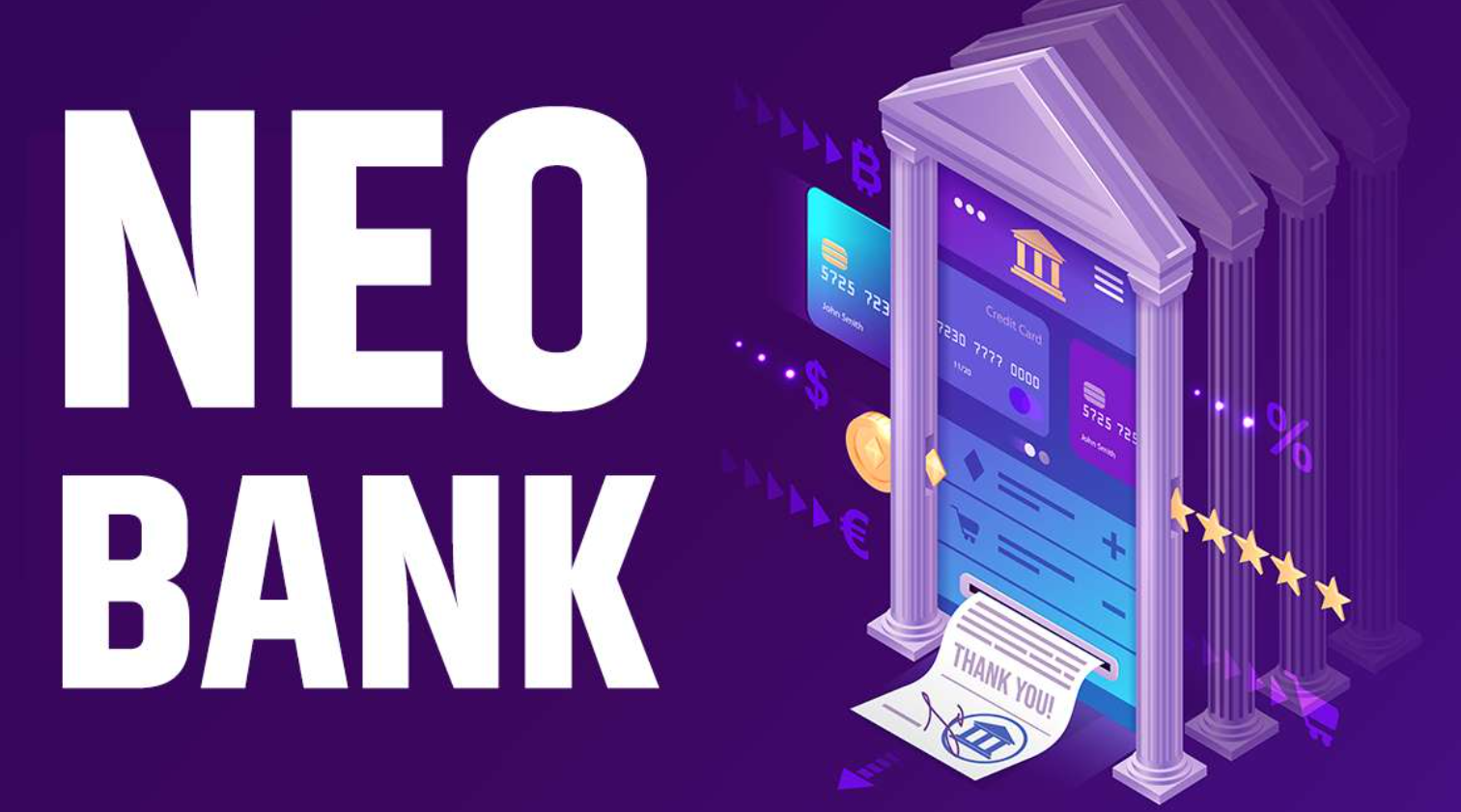In the fast-evolving landscape of modern banking, neobanks have emerged as the disruptors, revolutionizing traditional financial systems with their innovative digital-first approach. However, with innovation comes inherent risks that can make or break these fintech entities. As the financial world continues to witness the rise of neobanks, understanding and mastering the intricacies of their business model risks is paramount for ensuring long-term stability and success.
Navigating the uncharted waters of neobank business models requires a strategic mindset and proactive risk management approach. From regulatory compliance hurdles to cybersecurity threats and customer data privacy concerns, neobanks face a myriad of challenges that demand meticulous attention. In this blog post, we delve deep into the strategies that can empower neobanks to not only mitigate risks effectively but also pave the way for sustainable growth and resilience in the ever-changing financial landscape.
Join us on this insightful journey as we uncover the keys to mastering the dynamic realm of neobank business model risks, where foresight and adaptability reign supreme.
Understanding the Neobank Business Model: Key Components and Disruptions
Before delving into the strategies for mitigating risks in neobank business models, it is crucial to understand the key components. Neobanks, also known as digital banks or challenger banks, operate solely online without any physical branches. They leverage technology to provide seamless user experiences, personalized financial services, and cost-effective solutions.
One of the key components of a neobank business model is its customer-centric approach. Unlike traditional banks, neobanks prioritize customer experience by offering intuitive mobile applications, real-time transaction updates, and personalized financial insights. By harnessing the power of data analytics and artificial intelligence, neobanks can provide tailored recommendations and services that meet individual customer needs.
Furthermore, neobanks often partner with established financial institutions or fintech companies to offer a wide range of products and services. These partnerships enable them to leverage existing infrastructure while focusing on their core competencies such as user experience design and digital marketing.
However, disruption is an inherent aspect of the neobank business model. By challenging traditional banking norms and embracing technological advancements, neobanks disrupt established players in the industry. This disruption can be seen in various aspects such as pricing models (lower fees or no fees), faster loan approvals through automated processes, and simplified account opening procedures.
To navigate this dynamic landscape successfully, neobanks must continuously innovate while staying compliant with regulatory frameworks.
Regulatory Compliance in Neobanking
The rapid growth of neobanks has raised questions about regulatory compliance within this emerging sector. As they operate across borders without physical branches, navigating the complex legal landscape becomes crucial for their sustainability.
Regulatory compliance involves adhering to various laws and regulations related to banking, data protection, anti-money laundering (AML), and know-your-customer (KYC) requirements. Neobanks must establish robust compliance frameworks to ensure they meet these obligations.
Collaboration with regulatory bodies is essential for neobanks to understand and comply with the evolving legal requirements. By actively engaging with regulators, neobanks can stay updated on changes in regulations and adapt their operations accordingly.
Additionally, implementing robust risk management practices is vital for neobanks to identify and mitigate potential compliance risks. This includes conducting regular internal audits, implementing strong data protection measures, and establishing effective AML and KYC procedures.
Furthermore, neobanks should invest in educating their employees about regulatory compliance. By fostering a culture of compliance awareness, neobanks can ensure that all staff members understand their responsibilities and contribute to maintaining a compliant environment.
Cybersecurity Threats in the Digital Sphere: Safeguarding Neobank Operations
In an increasingly digital world, cybersecurity threats pose significant risks to neobank operations. As neobanks heavily rely on technology for their services, protecting customer data and ensuring secure transactions are paramount.
Neobanks must implement robust cybersecurity measures to safeguard against threats such as hacking attempts, data breaches, phishing attacks, and malware infections. This involves employing multi-factor authentication methods, encryption techniques for sensitive data transmission, regular security audits, and continuous monitoring of systems for any suspicious activities.
Moreover, investing in cybersecurity training programs for employees is crucial. By educating staff members about best practices for information security and raising awareness about potential threats such as social engineering attacks or phishing emails, neobanks can create a strong line of defense against cybercriminals.
Collaboration with cybersecurity experts and staying updated on the latest security measures and trends is also essential for neobanks to proactively address emerging threats.
Data Privacy Concerns
As neobanks collect and process vast amounts of customer data, ensuring data privacy becomes a critical aspect of their operations. Building trust and transparency with customers is key to maintaining a loyal customer base.
Neobanks must comply with data protection regulations such as the General Data Protection Regulation (GDPR) to safeguard customer information. This involves obtaining explicit consent from customers before collecting their data, implementing robust security measures to protect data from unauthorized access, and providing clear privacy policies that outline how customer data is used.
Transparency plays a vital role in building trust. Neobanks should communicate openly with customers about how their data is being used, stored, and shared. By providing regular updates on privacy practices and allowing customers to have control over their personal information, neobanks can foster a sense of trust among their user base.
In addition, investing in advanced technologies such as blockchain can enhance data security and privacy by providing immutable records of transactions while maintaining anonymity.
Financial Stability Strategies
Financial stability is crucial for the long-term success of neobanks. As they operate in a highly competitive market, implementing effective strategies to ensure sustainable growth amid volatility is essential.
Diversification of revenue streams is one such strategy that neobanks can adopt. By offering a range of financial products such as savings accounts, loans, investments, or insurance services, neobanks can reduce reliance on any single revenue source.
Furthermore, establishing strategic partnerships with established financial institutions or fintech companies can provide additional stability. These partnerships not only offer access to a broader customer base but also enable neobanks to leverage existing infrastructure and expertise.
Neobanks should also focus on maintaining healthy liquidity levels and capital adequacy ratios. By closely monitoring their financial metrics and conducting stress tests, neobanks can identify potential vulnerabilities and take proactive measures to address them.
Moreover, implementing effective risk management frameworks is crucial for financial stability. This includes identifying and assessing risks, establishing risk mitigation strategies, and regularly monitoring risk exposure.
Innovation as a Double-Edged Sword
Innovation is at the core of the neobank business model. However, it also brings inherent risks that need to be carefully managed. Neobanks must strike a balance between pushing the boundaries of innovation while mitigating potential risks.
Implementing robust innovation frameworks can help neobanks manage risks effectively. This involves conducting thorough market research, testing new products or features before full-scale implementation, and closely monitoring customer feedback for continuous improvement.
Neobanks should also establish cross-functional teams dedicated to innovation. By bringing together professionals from various disciplines such as technology, marketing, finance, and compliance, neobanks can ensure that innovative ideas are evaluated from multiple perspectives.
Furthermore, fostering a culture of risk-awareness is essential. Neobanks should encourage employees to think creatively while being mindful of potential risks associated with new initiatives. Regular training programs on risk management can help employees understand their roles in identifying and mitigating risks.
Crisis Management and Contingency Planning
No business is immune to crises or unexpected events. Neobanks must have robust crisis management plans in place to ensure they can navigate through challenging times effectively.
Developing comprehensive contingency plans is crucial for neobanks. This involves identifying potential risks and developing strategies to mitigate their impact. For example, establishing backup systems and disaster recovery protocols can help neobanks recover quickly from any disruptions.
Regular stress testing and scenario analysis can also help neobanks identify vulnerabilities in their operations and take proactive measures to address them.
Moreover, effective communication is key during times of crisis. Neobanks should have clear communication channels in place to keep customers informed about any disruptions or changes in services. By being transparent and proactive in addressing customer concerns, neobanks can maintain trust even during challenging times.
Collaborative Partnerships
Collaborative partnerships play a significant role in the success of neobanks. By leveraging ecosystems of partners, neobanks can enhance their resilience and expand their offerings.
Strategic partnerships with established financial institutions or fintech companies allow neobanks to tap into existing customer bases and leverage established infrastructure. These partnerships enable neobanks to offer a wider range of products and services without the need for extensive internal resources.
Furthermore, collaborating with technology providers can help neobanks stay at the forefront of innovation. By partnering with companies specializing in emerging technologies such as artificial intelligence or blockchain, neobanks can enhance their product offerings and improve operational efficiency.
In addition, participating in industry associations or consortiums allows neobanks to share best practices, collaborate on regulatory compliance efforts, and collectively address common challenges faced by the industry as a whole.
Talent Acquisition and Skill Development
The success of a neobank heavily relies on its workforce. Hiring talented individuals with diverse skill sets is crucial for fostering a culture of risk-awareness and innovation.
Neobanks should focus on attracting professionals with expertise in technology, data analytics, compliance, and customer experience. By building a team with diverse backgrounds and skill sets, neobanks can effectively address the multifaceted challenges they face.
Investing in continuous skill development programs is essential to keep employees updated on the latest industry trends and technologies. By providing opportunities for professional growth and encouraging employees to upskill, neobanks can foster a culture of continuous learning and adaptability.
Moreover, neobanks should establish performance evaluation frameworks that reward risk-awareness and innovation. By aligning performance metrics with the organization’s strategic goals, neobanks can motivate employees to actively contribute to risk management efforts.
Conclusion
In conclusion, mastering the risks associated with the neobank business model is crucial for long-term stability and success. By understanding the key components of neobanking, navigating regulatory compliance challenges, safeguarding against cybersecurity threats, ensuring data privacy, implementing financial stability strategies, balancing innovation risks, preparing for crises through effective contingency planning, leveraging collaborative partnerships, and fostering a culture of risk-awareness through talent acquisition and skill development – neobanks can position themselves as leaders in the ever-evolving financial landscape.
As the demand for digital banking solutions continues to grow globally, neobanks have an opportunity to reshape the future of banking. By effectively managing risks while embracing innovation and customer-centricity at their core, neobanks can pave the way for a more inclusive and accessible financial ecosystem.

